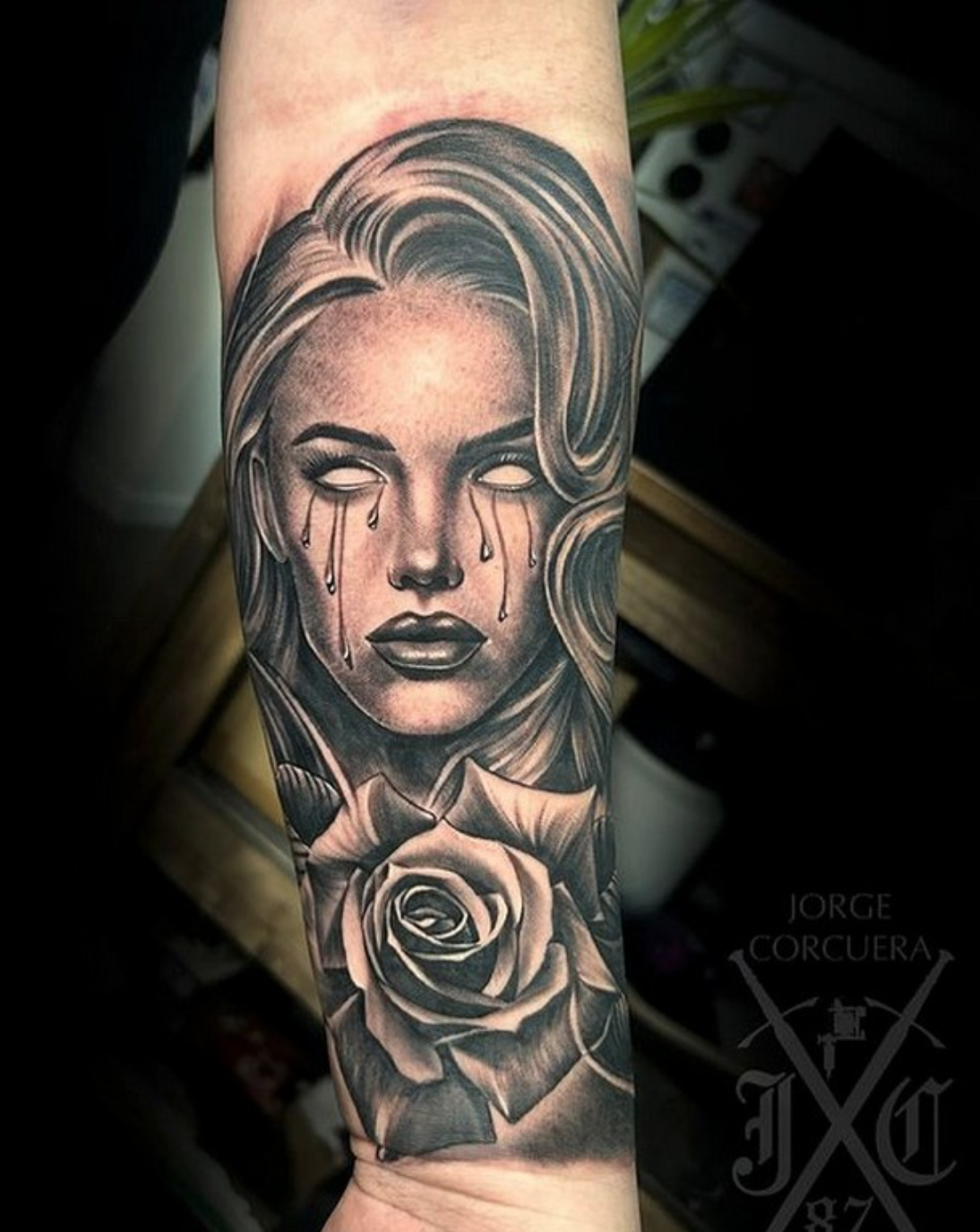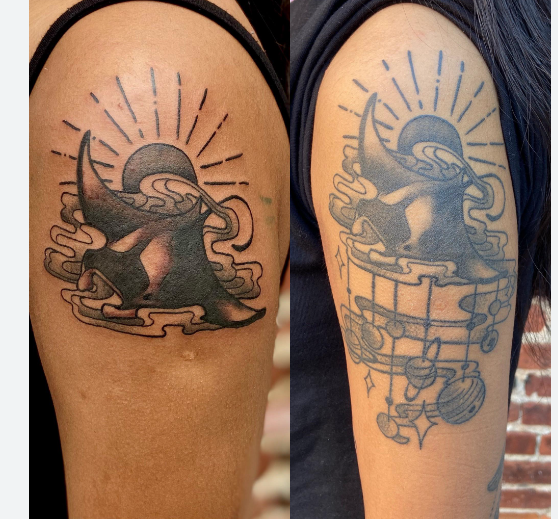Opaque Tattoos vs. Greywash: What’s the Difference?
If you've ever been curious about the difference between opaque tattooing and greywash shading, you're not alone. It's a question we get a lot in the studio—so much so that Glen recently sat down to break it down in a short video. Watch the video here.
But let’s dive into it a bit more here!
What is Greywash?
Greywash is a shading technique used in tattooing where black ink is diluted with varying amounts of distilled water (or other thinning agents).
This creates a range of grey tones that mimic pencil or charcoal shading. It’s a go-to for realism, smooth gradients, and subtle transitions—perfect for portraits, soft shadows, and anything that needs that soft, smoky look.
In a nutshell:
🖤 Greywash = black ink + water = soft, gradual shading.
What is Opaque Shading?
Opaque shading, on the other hand, is all about solid coverage. It uses undiluted or slightly mixed inks—often including white or color—to build bold, saturated areas. These areas don't rely on transparency or the skin tone showing through.
By Glen Carloss
The result is heavier, more graphic, and often more illustrative.
Glen Carloss
Think of it like using paint versus pencil. It’s denser, and often used in neo-traditional, illustrative, painting, and realistic styles.
By Glen Carloss
In short:
🎨 Opaque = full pigment = bold and dense visual impact.
Why Does It Matter?
Understanding the difference can help when you're picking a tattoo style—or talking through your design with your artist. It affects how the tattoo looks immediately after it's done, how it heals, and how it ages over time.
Healing Differences: What to Expect
Beyond just how they look going on, opaque and greywash tattoos heal very differently, and understanding this can help you manage your aftercare expectations.
🖤 Greywash Healing
Tattoo by graceaudreytattoo showing the difference of fresh vs. healed
Greywash tattoos tend to heal lighter than they look when freshly done. That’s because the ink is diluted and relies on the skin’s natural tone to create those soft transitions. During healing:
You might notice the piece look “faded” or “dusty” for a few days.
The final healed result will be more subtle and blended.
Touch-ups are sometimes needed for very light areas, especially on tricky skin types.
Another example of fresh vs. healed
Pro tip: If your skin is dry or flaky, greywash can appear patchy while healing—but don’t panic. That’s just the top layer healing, not the actual ink disappearing.
🎨 Opaque Healing
Opaque shading heals closer to how it looks when fresh. Because the ink is thicker and more saturated:
Tattoo by Glen Carloss; Right Fresh, Left healed
The tattoo will scab slightly more in some cases, especially in fully packed areas.
What you see on day one is more similar to what you’ll see once it’s healed.
It's less affected by underlying skin tone, so it’s often more predictable in color retention.
Healed tattoo by Katie J
Pro tip: Keeping your skin moisturized is key with opaque pieces. Heavier ink can get itchy or tight during healing, and scratching can lead to uneven spots.
Final Thoughts
Choosing between greywash and opaque isn't just a style preference - it affects the whole experience, from application to healing to long-term aging.
Still unsure which one’s best for your next piece? Chat with your artist or come see us in the studio. And don’t forget to check out Glen’s video for an educational explanation.










